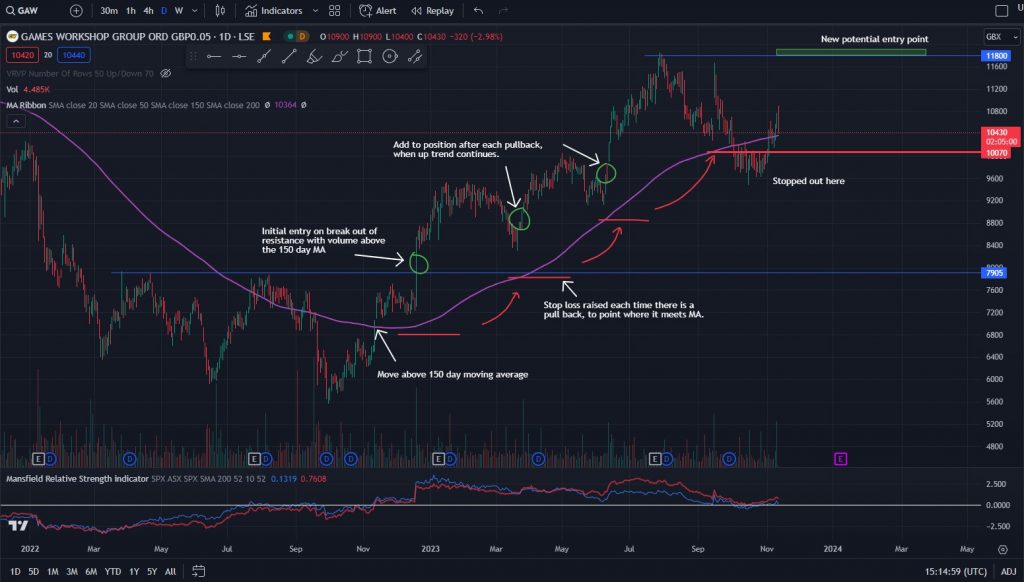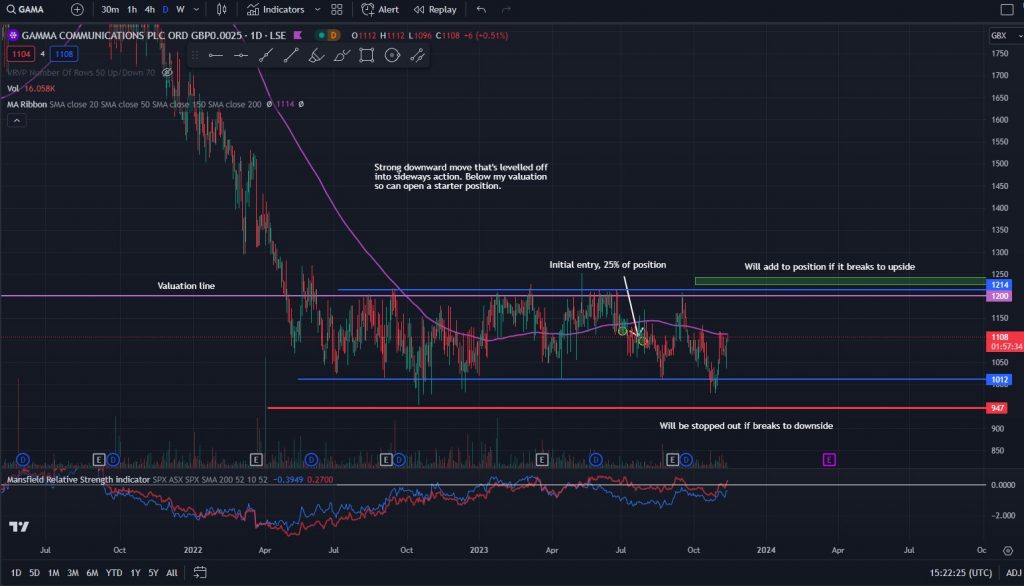I’ve been refining my strategy over the past couple of months to incorporate some trading elements into my existing, investing focussed framework. The reason for this is to limit potential downside risk and ensure I take profits when I earn them, rather than giving them all back due to a declining share price. Both of which I have experienced over the past couple of years and don’t wish to continue doing.
I’ve read several books on trading strategies, though the one that spoke to me the most is Stan Weinstein’s “Secret’s for Profiting in Bull and Bear Markets”. His book is focussed on longer term trading, weeks, months or even years, breaking down the movement of a stocks share price into stages and only buying when in a confirmed up trend, with a set stop loss to limit downside risk.
The trading element of my new hybrid strategy borrows heavily from Stan Weinstein’s methodology, I would highly recommend giving it a read. So what is the new strategy?
Well first and foremost it is still based on fundamental analysis, I won’t be trading stocks that I don’t believe are high quality businesses. To be traded a stock must past my checklist and be on my watchlist. I’m not allowed to touch anything that isn’t, tempting as it may sometimes be. Here’s a video going through my checklist system for those that fancy a diversion.
Right so I have my watchlist of high quality stocks. When do I buy them and just as importantly when do I sell them? Well here is where the hybrid strategy comes in. I have two sets of rules for when to buy. One, for when a stock is below my calculated valuation, so theoretically a good investment, and two for when the stock is above my valuation line and more suitable for a trade.
When the share price is above my valuation line.
This is when the trading part of my hybrid strategy comes in to play. At this point the share price is above the valuation that I deem to be a good investment. But there are so many high quality stocks that very rarely drop down to that line and are putting in strong moves all the time. I don’t want to miss out on these gains, hence the reason for this new strategy.
I’m looking for a share that’s either been in a down trend and is turning into an up trend, or a stock that’s been in a strong up trend, has been trading sideways for a while and is about to start another up leg. In both cases I am looking for a breakout of a trading range above the 150 day moving average. For me to open a position the share price must be above the 150 day moving average, have broken out of its trading range and have higher than usual trading volume. I will also look for a rising RSI & a fundamental catalyst such as a strong earnings report, though this is not essential.
On entry I will set a stop loss either below the 150 day moving average or a near by level of support, usually around 10%, to limit my donwside risk. I’ll start an opening position of 25% of my desired total position size, say £1,000 if my full position is to be £4,000. If the share price successfully breaks out and starts a new up trend I will add to the position in 25% increments until I have a full position. I’ll try and do this when the price has a pullback and continues upwards again. Throughout this process I’ll raise my stop loss to the 150 day moving average each time there’s a continuation of the up trend after a pull back (again this is all Stan Weinstein’s strategy). If the price action starts to trade sideways I’ll raise my stop loss to just below the trading range, so if a new down trend forms I’m out with my profits, but on the other hand I’m giving the stock a chance to breath and continue higher as well. The good thing about this strategy is that if I get stopped out I can get back in again if the stock continues higher, with the same initial set up. It’s effectively insurance.
Here’s a visual example in the form of Games Workshops (GAW) chart:

When the share price is below my valuation line.
So at this point I have a high quality stock that is at a reasonable valuation, excellent. Why not just load the boat? Well I’ve done this in the past, continually averaging down, and then down some more, until I’m down 60% plus. Still theoretically it should be a good investment right? But what happens when a company deteriorates, their earnings fall, something fundamentally changes? I’m then stuck with a 60% loss on a company that is now not good value. It’s no longer a good investment, so do I sell now at a 60% loss? I probably should. A tough decision and a position that I don’t want to put myself in any more. Hence the reason for the new strategy. Not to mention that this new strategy will more than likely give me a lower average entry price than averaging down any way.
Now I must wait for a sign of a bottom in the downward trend, no more trying to catch a falling knife. For me to be confident of a bottom there must be some, or all of the following. A clearly defined sideways trading range, higher lows, a rising RSI or a break through the 50 day MA. Once I’m reasonably confident the downward trend is over I am allowed to start a position, 25% of my desired total. For example if I wanted a £10,000 position I could purchase £2,500 worth of shares. Now of course a new down trend could form so I have to place a stop loss below the trading range so that I’m not holding if a new down leg begins.
Assuming that this is actually the bottom, I have a starting position in a high quality stock at an excellent valuation and have very limited downside risk. I then wait for the stock to break out, forming a new up trend, using the same set ups I talked about previously in my trading set up. I will add another 25% to the position for a total of 50% at this point, raising my stop if appropriate. I then continue with the same process as if I was trading, adding on pull backs and raising my stop loss as I go. The reason for the different rules is that this allows me to take advantage of a stock being decent value and taking a calculated risk to start a position at these enticing levels.
Here’s a current example with Gamma Communications (GAMA). It was in a strong down trend and is now in a clearly defined sideways trading channel. It’s below my valuation (the pink line) so I can start a position, 25% of total. Now I must wait, if it breaks to the upside I add to the position, if it breaks to the downside I’m stopped out.

This is probably a good time to say that this strategy is not proven, I’ve only just started implementing it. Though I’m excited to see how it works out. That’s really the point of me writing these kinds of posts, to jot down my thoughts and strategies so I have a record of them and can see what works and what doesn’t. So it goes without saying that this is certainly not investment advice. I have no doubt my strategy will change again, probably multiple times, but that’s part of the journey!
